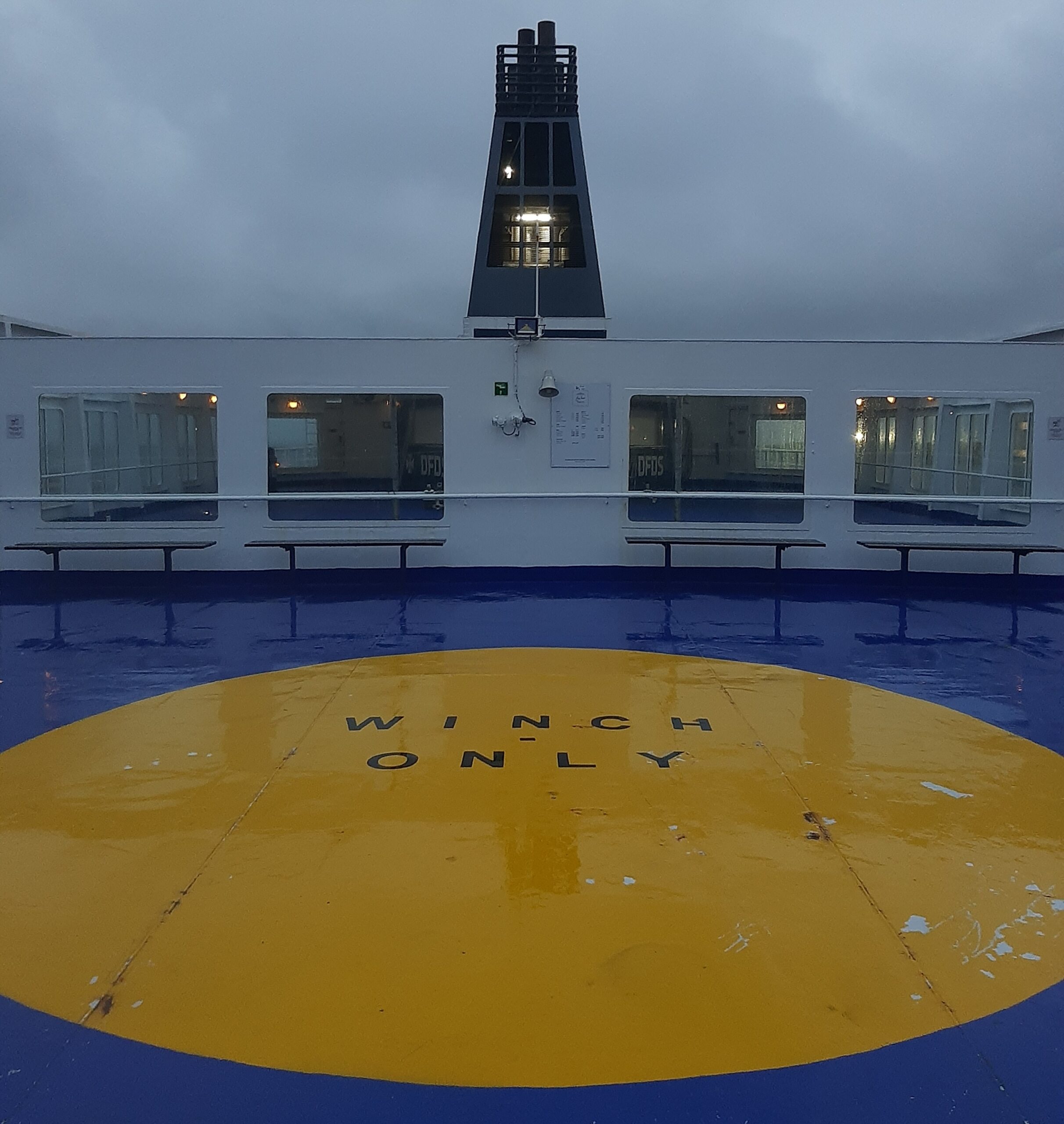By Elsje van Kessel (Senior Lecturer, School of Art History).
Published on: 30 January 2024.
‘Experience is Better than Knowledge’ – or so claims scholar of English literature and ‘blue humanities’ proponent Steve Mentz in a provocative article title borrowed from an early modern maritime manual. Human experiences of the sea, Mentz argues, can productively continue to shape ecological knowledge production, much like they informed maritime science in the early modern period (c. 1450–1750). A scholar of the early modern ocean and lover of the sea myself, trying to experience the sea as much as possible through swimming and surfing, I find Mentz’s notion compelling. Like so many others, I worry deeply about the welfare of the natural world and my own ecological footprint. So, when I visited my parents in the Netherlands in late November, I decided to complete the return part of the journey not by aeroplane but by ferry, travelling the North Sea via a more sustainable alternative.
Sea journeys are also the topic of my current research, which examines the lived oceanic trajectories of early modern art objects. In the sixteenth and seventeenth centuries, millions of objects crossed the oceans, but what happened to them while crossing the salty water remains relatively unexplored. Goods like silks, cottons, furniture, gold, silver, and objects like porcelain, paintings, precious stones, jewellery, and ivory carvings, spent months and sometimes years on ships crossing the oceans, where uncertain fates awaited them. Loss at sea was rife: damaged ships, overloading, navigational errors, pirates, as well as the winds and the waters made the safe arrival of ships and their cargoes at their planned destinations deeply uncertain. Studying the shipwreck and survival of maritime objects allows us to throw fresh light on imperialism, colonialism, and the large-scale extraction of resources. These are all practices enacted via the early modern oceans and they are in many ways at the origins of our current condition of ecological crisis. But early modern shipwrecked objects can also provide tales of how disaster can be survived, and how heritage can live with loss.
Back to my trip by ferry – infinitely safer and more comfortable than any early modern sea journey, to be sure. After a straightforward check-in process in the port of IJmuiden, near Amsterdam, I board the ship and find my cabin. My luggage includes some bulky possessions that I’m finally able to take to Scotland after my parents have tidied their attic. Yet another advantage of more sustainable ways of travel are the things you can take with you. My cabin is small, but it is mine to use – quite luxurious compared to flying economy class. The WIFI isn’t working and I’m not getting any mobile signal (roaming at sea is said to be prohibitively expensive, anyway). I resign to my state of disconnection and decide to focus on other things.
If you’re open to it, travel at sea is a rich sensory experience. My trip takes place at the darkest time of year but it’s still possible to see things when I switch off the lights in my cabin. The ship throws light on the surrounding water, and the white foam on top of the waves glistens, reflecting the light right back. The sea moves the ship up, down, and sideways, and walking in a straight line can be a challenge, like being drunk without having had a drop of alcohol – but sleeping on this rhythm is strangely comfortable. The wind rattles my window, and I hear the soft hum of the ship’s engine below me, and sometimes the low drum of water on steel, when neither wave nor hull makes room for the other. The next morning, I step outside and explore the vessel’s many outdoor spaces. The sea air is exceptionally cold this time of year, but it feels good to stand in it. Over breakfast, I see the sun come up over the water – there’s nothing like it.
The ferry trip takes time, but – as long as you’re not too prone to sea sickness – these are hours well spent. As for me, I certainly plan to repeat this experiment in mindful travel and take a boat more often – including for research-related trips.
Here are some tips to plan your own sea journey:
- The ferry service between North Shields/Newcastle and IJmuiden/Amsterdam is operated by DFDS. On both ends, the ship leaves in the late afternoon, and arrives at its destination around 9.30 the next morning, taking about seventeen hours.
- There are various restaurants and cafés on board, and I booked my dinner and breakfast in advance for peace of mind, but it seems passengers can also bring their own food.
- You can travel on foot, as I did, or bring your car. The ships also have facilities for pets.
- I found booking via the DFDS website straightforward. Prices vary depending on cabin and whether passengers are travelling by vehicle or on foot. I decided to go for a 2-person sea view cabin with bunk beds, which cost €140 or around £120 for a single journey. More economical options are available, especially if you travel with companions and split the cost. More comfortable cabins are a possibility, too.
- Bus transfers are available to take passengers between the ferry terminals and the main train stations (Newcastle/Amsterdam) on both ends, and you can add these to your trip when you book or buy tickets on the day.
- I completed my journey by train: with LNER and Scotrail between Leuchars and Newcastle, and with NS, the primary Dutch railway company, between Amsterdam and my destination in the Netherlands.
- According to this calculator – highlighted by Lydia Cole in her wonderful blog – travelling from Leuchars to Amsterdam by train and ferry emits over 6 times less CO2 than completing the same journey by train and aeroplane. DFDS facilitates passengers’ carbon offsetting and promotes various other environmental initiatives.
Photography: Elsje van Kessel
